Obama ja R. Douglas Fields napit vastakkain "aivoyhteyksien kartoittamisesta":
https://www.youtube.com/watch?v=C4cwjaOc6Lc
" R. Douglas Fields on Brain Mapping vs. Neuron Mapping
Neuroscientist R. Douglas Fields expresses concern that President Obama's BRAIN Initiative may be overlooking the primary cells that make up this complex organ. Fields encourages looking past the gray matter. Learn more about brain mapping and other views at WorldScienceFestival.com "
" Nature | Comment
Neuroscience: Map the other brain
R. Douglas Fields
04 September 2013
Glia, the non-neuronal cells that make up most of the brain,must not be left out of an ambitious US mapping initiative, says R. Douglas Fields.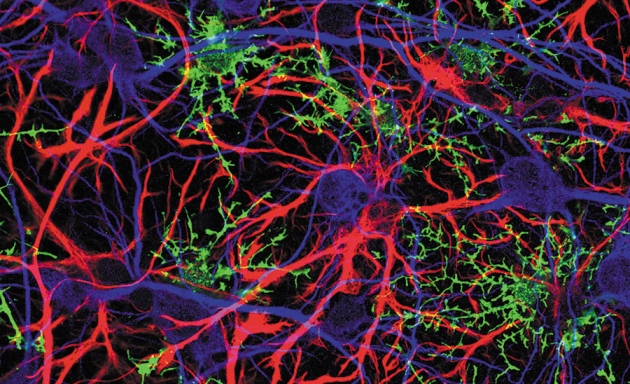
The Brain Research through Advancing Innovative Neurotechnologies (BRAIN) Initiative announced by US President Barack Obama in April seeks to map and monitor the function of neu- ral connections in the entire brains of experimental animals, and eventually in the human cerebral cortex.
Several researchers have raised doubts about the project, cautioning that mapping the brain is a much more complex endeavour than mapping the human genome, and its usefulness more uncertain.
I believe that exploring neural networks and developing techniques with which to do so are important goals that should be vigorously supported.
But simply scaling up current efforts to chart neural connections is unlikely to deliver the promised benefits - which include understanding perception, consciousness, how the brain produces memories, and the development of treatments for diseases such as epilepsy, depression and schizophrenia1.
A major stumbling block is the project's failure to consider that although the human brain contains roughly 100 billion neurons it contains billions more non-electrical brain cells called glia.
These reside outside the neuronal 'connectome' and operate beyond the reach of tools designed to probe electrical signalling in neurons.
Dismissed as connective tissue when they were first described in the mid-1800s, glia have long been neglected in the quest to understand neuronal signalling.
Research is revealing that glia can sense neuronal activity and control it.
Various studies also indicate that glia operate in diverse mental processes, for instance, in the formation of memories. They have a central role in brain injury and disease,and they are even at the root of various disorders - such as schizophrenia and Alzheimer's - previously presumed to be exclusively neuronal. That the word 'glia' was not uttered in any of the announcements of the BRAIN Initiative, nor written anywhere in the 'white papers' published in 2012 and 2013 in prominent journals outlining the ambitious plan, speaks volumes about the need for the community of neuroscientists behind the initiative to expand its thinking.
All major glial cell types in the brain - oligodendrocytes, microglia and astrocytes - communicate with each other and with neurons by using chemical neurotransmitters and gap junctions, channels that permit the direct transfer between cells of ions and small molecules (see ‘Roles of glial cells’).
Roles of glial cells
R. DOUGLAS FIELDS
Oligodendrocytes (green)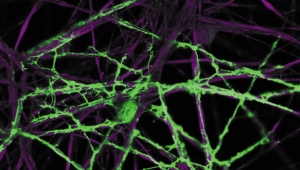
Form myelin electrical insulation, increasing conduction velocity by at least 50 times.
Provide vital metabolic support for axons (purple). Involved in multiple sclerosis, amyotrophic lateral sclerosis and the inhibition of repair after spinal-cord injury.
Astrocytes (red and green)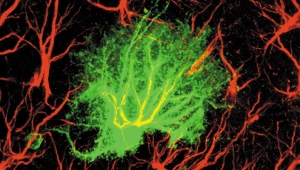
Ensheath synapses, regulate neuronal excitability and synaptic transmission. Res- pond to injury by secreting extracellular matrix proteins. Implicated in neurogenesis, cell migration, and many neurological and psychiatric disorders.
Microglia (green)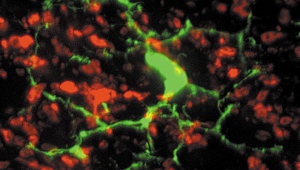
Highly motile and responsive to nervous-system injury and infection. Monitor electri-cal activity in neurons and prune synaptic connections (red). Involved in almost all nervous-system diseases and in certain psychiatric conditions.
More
Oligodendrocytes produce the myelin sheath, the insulating material that surrounds nerve fibres called axons. This sheath greatly increases the speed at which electrical signals are transmitted through axons - a crucial feature because nervous-system function depends on information being transmitted at high speed.
Biologists have known for decades that microglia - the immune cells of the brain - respond to infection and brain trauma by clearing away diseased or damaged tissue and releasing substances that stimulate repair. But last year, a study 5 of how eye-brain connectivity is established in developing mice showed that microglia also prune back synapses and rewire neural connections in a healthy brain, depending on the individual's visual experience shortly after birth.
Various studies 3 have revealed that astrocytes regulate the transmission of electri-cal signals across synapses by modifying the concent-ration of extracellular potas-sium;controlling local blood flow;releasing and taking up neurotransmitters and other neuromodulatory substaces;delivering nutrients to neurons;and altering the geomet-ry and volume of space between brain cells. All of these things influence nervous-system communication and plasticity.
Glia in action
This video captures the waves of calcium ions passing between rat astrocytes as they engage in non-electrical communication.
When experts on neuronal plasticity and computational neuro-science came toge-ther with glial experts at a workshop in February entitled Glial Biology in Learning and Cognition 6, held at the US Na- tional Science Foundation in Arlington, Virginia, our unanimous conclusion was that neurons working alone provide only a partial ex-planation for complex cognitive processes, such as the formation of memories. The complex branching structure of glial cells and their relatively slow chemical (as op-posed to electrical) signalling in fact make them better suited than neurons to certain cognitive processes.These include processes requiring the integration of information from spatially distinct parts of the brain, such as learning or the experiencing of emo-tions, which take place over hours, days and weeks, not in milliseconds or seconds.
Pioneering research on glia is even offering glimpses into the mechanisms that un-derlie learning, other forms of plasticity and information processing.For instance, my research group has established that,in vitro,the impulse traffic in an axon can control its myelination by glia 7. Because myelination determines the speed at which an electrical signal is transmitted through an axon, it can influence how many inputs fire on to a neuron at the same time - a process that is fundamental to most learning and synaptic plasticity. When people acquire new skills,from juggling to playing computer games, the structure of specific myelinated regions of their brains changes 8.
We are only beginning to learn about the diversity, connectivity and function of astro-cyte networks. Various studies suggest that astrocytes have anatomical and physio-logical properties that may impose higher-order organization on information proces-sing in the brain. In the grey matter of the cerebral cortex and hippocampus, astro-cytes are organized in non-overlapping domains. The significance of this tile-like organization is unknown,but one human astrocyte (an intricate, bush-like cell) can encompass, and therefore influence,two million synapses 9.In fact,human astrocytes are markedly dif- ferent from those of other animals. Mice that have had a proportion of their astrocytes replaced with human ones show increased synaptic plasticity and faster learning 9 in a range of tests.
Neuroscientists have known for several decades that glia cause certain diseases. Nearly all cancers originating in the brain derive from glia (which, unlike mature neu- rons, undergo cell division). In multiple sclerosis, the myelin sheaths around axons become damaged, and in HIV-associated neurological conditions, the virus infects astrocytes and microglia, not neurons. Many neurological disorders that were once considered to be exclusively neuronal in nature are now also known to involve glia, including Rett syndrome,a neurodevelopmental condition that includes autism-like symptoms, the motor-neuron disease amyotrophic lateral sclerosis, Alzheimer's di-sease and chronic pain. The same is true for various other develop-mental and psy- chiatric conditions such as schizophrenia, depression and obsessive – compulsive disorder 2, 3.
Agenda for success
Mapping and monitoring the entire human cerebral cortex is expected to require an investment comparable to that needed for the Human Genome Project: US$ 3.8 billion 1. The public will not support such a major expenditure of public funds for a scientific research project if the promised benefits are oversold,if they do not under-stand the benefits or if the costs are not realistic. This was demonstrated in 1993 by the US Congress's cancellation of a multibillion-dollar project to build a supercon-ducting super collider, the construction of which was already under way in Waxahachie, Texas.
Unlike the quest to capture the Higgs boson or to land a human on the Moon, few people question the need to understand the human brain. The brain is the greatest enduring mystery of the human body,and intellectual disability, brain cancer, spinal- cord injury, senile dementia and mental illnesses such as schizophrenia and dep-ression touch the lives of almost everyone. But on its current trajectory, the BRAIN Initiative risks failure - both scientifically and in terms of public support.
At the World Science Festival in New York in June, one participant argued that infor-mation about glia will be a by-product of neuronal mapping and of the development of technologies to trace and record neuronal connections. This is implausible. New methods to monitor electrical signalling in neurons, such as voltage-sensitive dyes or nanoparticles that sense the electrical potential across membranes, will be of little use for understanding cells that do not communicate using electrical impulses. It is this view that has perpetuated our comparative ignorance about glia.
Moreover,the exclusion of glia from the BRAIN Initiative underscores a more general problem with the project:the assumption that enough measuring of enough neurons will in itself uncover 'emergent' properties and, ultimately, cures for diseases 1,4. Ra-ther than simply materializing from measurements of “every spike from every neu- ron” 1,4,better understanding and new treatments will require hypothesis-directed re-search. The 302 neurons and 7,000 connections that make up the nervous system of the roundworm Caenorhabditis elegans were mapped in the 1970s and 80s. More than two decades later, little is understood about how the worm's nervous system produces complex behaviours.
In any major mapping expedition, the first priority should be to survey the uncharted regions.Our understanding of one half of the brain (the part comprised of astrocytes, oligodendrocytes and microglia) lags a century behind our knowledge of neurons. I believe that answers to questions about the brain and public support for a large-scale study are more likely to come from expanding the search into this unknown territory. As a first step,tools such as optogenetic methods and mathematical models are needed to assess the number,distribution and properties of different kinds of glial cell in different brain regions, and to identify how glia communicate with each other and with neurons, and what developmental and physiological factors affect this. This exploration into the ´other brain´ must be done together with the proposed studies of neurons. It cannot be achieved as a by-product of them. "
Related stories
Neuroscience: Solving the brain
The benefits of brain mapping
Whole human brain mapped in 3D
Hankken wikisivut antavat kuvan hölmöstä mammuttihankkeesta:
The BRAIN Initiative
(Brain Research through Advancing Innovative Neurotechnologies, also referred to as the Brain Activity Map Project) is a proposed collaborative research initiative announced by the Obama administration on April 2,2013,with the goal of mapping the activity of every neuron in the human brain.[2][3][4][5][6] Based upon the Human Genome Project, the initiative has been projected to cost more than $300 million per year for ten years. [2] NIH Director Dr. Francis Collins and President Barack Obama announcing the BRAIN Initiative
Announcement
In September 2011, molecular biologist Miyoung Chun of The Kavli Foundation organized a conference in London,at which scientists first put forth the idea of such a project.[4][7] At subsequent meetings, scientists from US government laboratories, including members of the Office of Science and Technology Policy, and from the Howard Hughes Medical Institute and the Allen Institute for Brain Science,along with representatives from Google, Microsoft, and Qualcomm, worked on further plans for the project. [2]
In a news conference on April 2,2013, President Obama announced that he would seek an initial expenditure of $100million for fiscal year 2014. [4][5][6] House Majority Leader Eric Cantor said that he would be likely to support the expenditure. [5] Addi-tional support will be provided by the Allen Institute for Brain Science, the Howard Hughes Medical Institute, the Kavli Foundation, and the Salk Institute for Biological Studies. [6] The White House announced that a detailed plan would be formulated by the end of the summer by a working group from the National Insti-tutes of Health, the Defense Advanced Research Projects Agency (DARPA), and the National Science Foundation, led by neuroscientists Cornelia Bargmann and William Newsome. [4][5][6]
Experimental approaches
News reports about the initiative indicated that it would seek to map the activity of each of the approximately 100 billion neurons in the human brain, [2] although initial studies will be performed in mice and other animals. [3]
In a 2012 scientific commentary outlining experimental plans for a more limited pro-ject, Alivisatos et al.outlined a variety of specific experimental techniques that might be used to achieve what they termed a "functional connectome",as well as new tech-nologies that will have to be developed in the course of the project. [1] They indicated that initial studies might be done in Caenorhabditis elegans, followed by Drosophila, because of their comparatively simple neural circuits.Mid-term studies could be done in zebrafish, mice, and the Etruscan shrew, with studies ultimately to be done in pri- mates and humans. They proposed the development of nanoparticles that could be used as voltage sensors that would detect individual action potentials as well as na- noprobes that could serve as electrophysiological multi-electrode arrays.In particular, they called for the use of wireless, non-invasive methods of neuronal activity detec-tion, either utilizing micro-electronic very-large-scale integration,or based on synthe- tic biology rather than micro-electronics.In one such proposed method, enzymatically produced DNA would serve as a "ticker tape record" of neuronal activity, [1][8] based on calcium ion-in-duced errors in coding by DNA polymerase. [9] Data would be ana-lyzed and mo-deled by large scale computation. [1] A related technique proposed the use of high-through-put DNA sequencing for rapidly mapping neural connectivity. [10]
Working group
The advisory committee is:[11]
- Cornelia Bargmann, PhD (co‐chair), The Rockefeller University
- William Newsome, PhD (co‐chair), Stanford University
- David J. Anderson, PhD, California Institute of Technology
- Emery Brown, MD, PhD, Massachusetts Institute of Technology
- Karl Deisseroth, MD, PhD, Stanford University
- John Donoghue, PhD, Brown University
- Peter MacLeish, PhD, Morehouse School of Medicine
- Eve Marder, PhD, Brandeis University
- Richard Normann, PhD, University of Utah
- Joshua Sanes, PhD, Harvard University
- Mark Schnitzer, PhD, Stanford University
- Terry Sejnowski, PhD, Salk Institute for Biological Studies
- David Tank, PhD, Princeton University
- Roger Y. Tsien, PhD, University of California, San Diego
- Kamil Ugurbil, PhD, University of Minnesota
Reactions
Scientists offered differing views of the plan. Neuroscientist John Donoghue said that the project would fill a gap in neuroscience research between, on the one hand, acti-vity measurements at the level of brain regions using methods such as fMRI, and, on the other hand,measurements at the level of single cells. [3] Psychologist Ed Vul ex-pressed concern, however, that the initiative would divert funding from individual in-vestigator studies. [3] Neuroscientist Donald Stein expressed concern that it would be a mistake to begin by spending money on technological methods, before knowing exactly what would be measured. [4] Physicist Michael Roukes argued instead that methods in nanotechnology are becoming sufficiently mature to make the time right for a brain activity map.[4]
In a January 2013 meeting, a group of neuroscientists concluded that the project would generate about 300 exabytes of data every year, presenting a significant tech-nical barrier. [12] Furthermore, the usefulness of most of the currently available high-resolution brain activity monitors is limited because they are highly invasive, being implanted by a process that involves surgically opening the skull. [12] "
Projektin johtaja löytyy täältä: sama henkilö joka on kartoittanut sukkulamadon kaikkien 123 neuronin kaikki (?) 7000 (keskinäistä?) kytkentää, ja kuienkin niin, että Fieldsin mukaan elukan käyttätymisestä ei tiedetä nyt sen enempää kuin toita toineta ennekään.
Obama to Unveil Initiative to Map the Human Brain
By JOHN MARKOFF and JAMES GORMAN
Published: April 2, 2013
President Obama on Tuesday will announce a broad new research initiative, starting with $100 million in 2014,to invent and refine new technologies to understand the human brain, senior administration officials said Monday.
Fred R. Conrad/The New York Times
Cori Bargmann of Rockefeller University will help lead a study of the brain in action.
Related
-
Obama Seeking to Boost Study of Human Brain (February 18, 2013)
-
Times Topic: Brain
A senior administration scientist compared the new initiative to the Human Genome Project, in that it is directed at a problem that has seemed insoluble up to now: the recording and mapping of brain circuits in action in an effort to “show how millions of brain cells interact.”
It is different, however, in that it has, as yet, no clearly defined goals or endpoint. Coming up with those goals will be up to the scientists involved and may take more than year.
The effort will require the development of new tools not yet available to neuroscien-tists and, eventually, perhaps lead to progress in treating diseases like Alzheimer’s and epilepsy and traumatic brain injury. It will involve both government agencies and private institutions.
The initiative, which scientists involved in promoting the idea have been calling the Brain Activity Map project,will officially be known as Brain Research Through Advan- cing Innovative Neurotechnologies, or Brain for short;it has been designated a grand challenge of the 21st century by the Obama administration.
Three government agencies will be involved:the National Institutes of Health, the De-fense Advanced Research Projects Agency and the National Science Foundation. A working group at the N.I.H., described by the officials as a “dream team,” and led by Cori Bargmann of Rockefeller University and William Newsome of Stanford Univer-sity, will be charged with coming up with a plan, a time frame, specific goals and cost estimates for future budgets.
The initiative exists as part of a vast landscape of neuroscience research supported by billions of dollars in federal money. But Dr. Newsome said that he thought a small amount of money applied in the right way could nudge neuroscience in a new direction.
“The goal here is a whole new playing field, whole new ways of thinking,” he said. “We are really out to catalyze a paradigm shift.”
Brain researchers can now insert wires in the brain of animals, or sometimes human beings,to record the electrical activity of brain cells called neurons,as they communi- cate with each other. But, Dr. Newsome said, they can record at most hundreds at a time.
New technology would need to be developed to record thousands or hundreds of thousands of neurons at once.And,Dr. Newsome said, new theoretical approaches, new mathematics and new computer science are all needed to deal with the amount of data that will be garnered.
As part of the initiative, the president will require a study of the ethical implications of these sorts of advances in neuroscience.
While news of the announcement has been greeted with enthusiasm by many researchers in fields as diverse as neuroscience, nanotechnology and computer science, there are skeptics.
“The underlying assumptions about ‘mapping the entire brain’ are very controversial" , said Donald Stein,a neuroscientist at Emory University in Atlanta. He said changes in brain chemistry were “not likely to be able to be imaged by the current technologies that these people are proposing.” "
Winner’s story: Donald G. Stein
Brain Injury's Stonnington Prize for Best Review Paper 2015 "

Vuoden 2015 parhaaksi aivovauriolääkäriksi USA:ssa valittu tri Donald Stein pitää "aivogeenikonnektomia" hölynpölyideana.
"Emphasizing the development of technologies first, he said, is not a good approach. “I think the monies could be better spent by first figuring out what needs to be mea-sured and then figuring out the most appropriate means to measure them.” he said. “In my mind, the technology ought to follow the concepts rather than the other way around.”
However,supporters of the initiative argued that it could have a similar impact as the Sputnik satellite had in the 1950s, when the United States started a significant nationwide effort to invest in science and technology.
“This is a different time,” said Michael Roukes, a physicist at the California Institute of Technology. “It makes sense to have a brain activity map now because the maturation of an array of nanotechnologies can be brought to bear on the problem.”

Michael Roukes at TEDxCaltech, 1/14/11
While the dollar amount committed by the Obama administration does not match the level of spending on the Human Genome Project, scientists said that whatever was spent on the brain initiative would have a significant multiplier effect. The Salk Insti-tute in La Jolla, Calif., is contributing money, said Terrence J. Sejnowski, head of the institute’s computational biology laboratory,adding that the project would have an impact at the neighboring University of California, San Diego, campus.
“One concrete example is that the chancellor has gotten excited about this and has decided that it is a great thing to invest in,” Dr. Sejnowski said. “That means hiring new faculty and creating new space.”
Idea ja siis mös "tarve" lähtivät tieteen ulkopuolelta...
The project grew out of an interdisciplinary meeting of neuroscientists and na-noscientists in London in September 2011. Miyoung Chun, a molecular biologist who is vice president of scientific programs at the Kavli Foundation, had organized the conference. Her foundation, she said,supports the idea that the next big scientific discoveries will come from interdisciplinary research.

Dr. Miyoung Chun was invited to meet President Obama three times to discuss her work on the brain.
“Federal funding is scarce these days,and I realized we need inspiring projects that can awake everyone’s imagination,” she said. “It occurred to me that this is a very inspiring idea.”
This article has been revised to reflect the following correction:
Correction: April 4, 2013
An article on Tuesday about a research initiative to invent and refine technologies to understand the human brain misstated the relationship between the Salk Institute and the University of California, San Diego. The Salk Institute, which is giving money to the research initiative, is an independent institute; it is not based at, or part of, the university.
A version of this article appeared in print on April 2, 2013, on page A12 of the New York edition with the headline: Obama to Unveil Initiative To Map the Human Brain.
Levi-Montalcinin valintaperiaate päässyt "unohtumaan"!!!
Tai sitten kyseessä on harkittu hölynpölytiedehyökkäys nimenomaan sitä vastaan.
Muun ohella näyttää päässeen kokonaan unohtumaan sodanjälkeisen ajan neurofy-siologian yksi kulmakivi v.1986 lääketiteen nobelistin Rita Levi-Montacinin valinta-periaate, joka sanoo,että geenit eivät määrää aksniyhteyksiä ainakaan ykstyiskohtai- sesti vaan neuroneja ja niiden yhteyksiä tuotetaan "yli tarpeen" ja näistä valikoituvat toimivien neuroyhteyksien pohjaksi ne jotka yhdistyvät kudokseen siten, että saavat siitä kavutekijää (BNF):
Sodanjälkeisen ajneurofysiologian yksi keskeinen kulmakivi on ollut ja on edelleen vuoden 1986 lääketieteen nobelsitin Rita Levi-Montalcinin valintaperiaate, joka tar- koittaa, että perimä ei määrää hermosolujen konkreettista yhteyksiä, vaan neuroneja ja niiden haarakkeita tuotetaan yli tarpeen ja näistä jäävät henkiin ne, jotka löytävät oikeaan kohteseen. Helsingin yliopiston Eero Castren kirjoittaa (Tieteessä tapahtuu 4/2004):
” Ääreishermoston hermosoluja siis tuotetaan ylimäärin ja niitä kuolee kehityksen ai-kana sitä enemmän,mitä vähemmän hermotettavaa kudosta on. Hermotettava kudos ei siten stimuloikaan hermosolujen jakautumista, vaan pitää kohdekudoksen saavut-taneita hermosoluja hengissä.Tällä mekanismilla kehittyvä organismi voi varmistaa kohdekudoksen optimaalisen hermotuksen mahdollisimman vähäisen hermosolu-määrän avulla.Levi-Montalcini havaitsi,että hermosolujen kohdesolut tuottivat tekijää, joka oli välttämätön ääreishermoston solujen hengissä säilymiselle ja jonka riittäväs-tä saatavuudesta hermosolut kilpailevat.Kehityksen aikana hengissä siis säilyivät vain ne hermosolut, jotka muodostivat toimivan yhteyden kohdesolun kanssa ja kykenivät siten saamaan riittävästi sen erittämää kasvutekijää (NGF). "
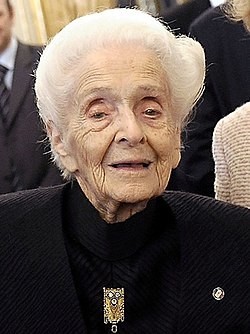
Nobelisti, kansanedustaja (Italian yhdisynyt työväenpuolue), Rita Levi-Montalcini vuonna 2009
Levi-Montalcini löysi tämän periaatteen tutkiessaan kanan alkioiden hermoston kehi-tystä II maailmansodan aikana kotilaboratoriossaan Italiassa, juutalaisena tieteellistä viroista syrjäytettynä. Seuraavaksi hän ryhtyi etsimään tuota kasvutekijää NGF:ää (neuro growth factor), jonka löytämisestä (1968) hän sai lääketieteen Nobelin palkin-non (1986) yhdessä Stanley Cohenin (USA) kanssa. Hän toimi Italiassa Rooman ja USA:ssa Missourin St.Louisin yliopistoissa. Keskushermostossa prosessi on vielä huomattavasti monivaiheisempi,ja syntyy paljon yhteyksiä, joiden signaalinjohtavuus vaihtelee suuresti glia-solujen vaikutuksiin liittyen (Fieldsin mekanismi).
http://hameemmias.vuodatus.net/lue/2015/09/tieteellinen-vallankumous-neurofysiologiassa
http://www.nature.com/news/surprising-contenders-emerge-for-trump-s-nih-chief-1.21295
" Nature | Breaking News
Surprising contenders emerge for Trump's NIH chief
Reproducibility guru, former defence-research official and controversial entrepreneur rumoured to be on list, along with current NIH leader and a congressman.
Article tools
Rights & Permissions
Reuters/AP/Getty/Stanford
Patrick Soon-Shiong, Francis Collins, Andy Harris and John Ioannidis are rumoured to be under consideration.
Could US president-elect Donald Trump be close to choosing a leader for the National Institutes of Health (NIH)?
Current NIH chief Francis Collins and Representative Andy Harris (Republican, Maryland), both front-runners for job, met separately with Trump on 11 January, as did billionaire surgeon Patrick Soon-Shiong on 10 January. Several people familiar with the Collins and Harris meetings described them as job interviews.
Other rumoured candidates include Geoffrey Ling, a retired Army neurosurgeon and former director of biotechnology at the Defense Advanced Research Projects Admi- nistration (DARPA), and John Ioannidis, an epidemiologist at Stanford University in California who has pushed for reproducibility in biomedical science.
Although Ioannidis says that he has not been approached by Trump’s staff, sources close to the transition team say that the scientist has been floated for the NIH posi-tion. “If they call, my first priority would be to make sure there are no strings attached in promoting any anti-science ideas", Ioannidis says, such as linking vaccines to autism.
But Collins - who has led the NIH since August 2009 - has already said that he would continue on if Trump asked. That would make Collins, the longest-tenured member of President Barack Obama’s science “dream team”, the first NIH director since the 1970s to be chosen by two presidents.
Known for his skill at communicating with lawmakers, Collins has the backing of four senior Republican members of Congress who signed a 2 December letter urging Trump to keep him on. But extending a single director’s tenure for so long may not be in the agency’s best interest, says Ezekiel Emanuel, a bioethicist at the University of Pennsylvania in Philadelphia.
“In general, I think more than eight years has not been a good idea", he says. “There’s a cycle, and eight years is hard to have new ideas and new energy.”
Others worry that Trump could go too far in the opposite direction,and pick an NIH chief without a significant science track record or experience managing large re-search projects. With both Harris and Soon-Shiong, ”my concern would be that this is a person who hasn't really been tested”, says Keith Yamamoto,a biologist at the University of California, San Francisco.
Culture clash?
Harris, an anaesthesiologist,has taken a strong interest in the NIH during his three terms in the House of Representatives.He helped write the 21st Century Cures Act,a law enacted last year to reform research and development at the NIH and the Food and Drug Administration, and pushed the NIH to develop a five-year strategic plan.
And Harris has taken a special interest in early-career scientists,proposing legisla-tion that would force the NIH to set aside more money for young researchers and to lower the age at which investigators receive their first grant.
Many lobbyists and science advocates contacted by Nature refused to comment on the record about Harris. Some expressed worry that his policy positions - including staunch opposition to research with human embryonic stem cells - would be at odds with the NIH’s culture.
“He would be much more entrepreneurial in outlook and attitude” than Collins, says one longtime NIH-watcher who works in science policy. “If it's Harris, I think there would be a mass exodus of senior leaders.”
Still, Harris may benefit from having served in the House with Representative Tom Price, the Georgia Republican who Trump has tapped to lead the Department of Health and Human Services, which oversees the NIH.
And his interest in early-career scientists could give him an edge with key Trump ad-visers: Silicon Valley billionaire Peter Thiel, who met with Trump on 11 January, and former House speaker Newt Gingrich. Both are said to be particularly interested in improving conditions for young researchers.
Another candidate who may appeal to Thiel is Ling. As the first director of DARPA's biotechnology office,Ling oversaw the kind of 'high-risk,high-reward' projects that the NIH does not often fund - and Thiel has said that science needs more bold, entre-preneurial ventures. But there is no indication that Ling has met with Trump as some of the other rumoured candidates have done, and he has not responded to Nature's request for comment.
Dark horse
If Trump is looking for an outsider candidate, that could boost the chances of Soon-Shiong, a billionaire surgeon who runs a network of health companies called NantWorks.
Soon-Shiong was among the scientists who advised Vice President Joe Biden’s Cancer Moonshot initiative. He also runs his own, separate programme called Cancer MoonShot 2020, a collaboration between several pharmaceutical companies developing immunotherapies.
Sources who have spoken with the transition team say that Soon-Shiong is also under consideration for other government positions, including presidential science adviser. (Another rumoured candidate for science adviser, former NIH director Elias Zerhouni, told Bloomberg News on 9 January that he did not want to leave his current post at drug giant Sanofi.)
- Nature
- doi:10.1038/nature.2017.21295


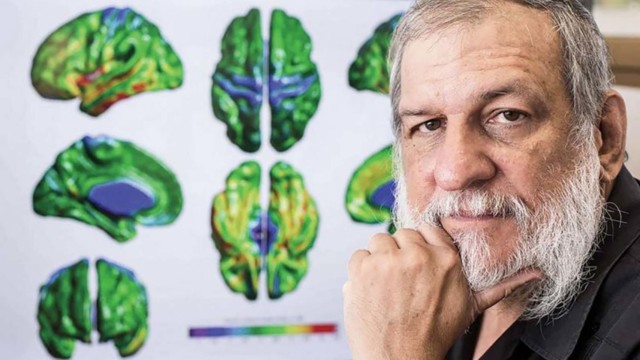




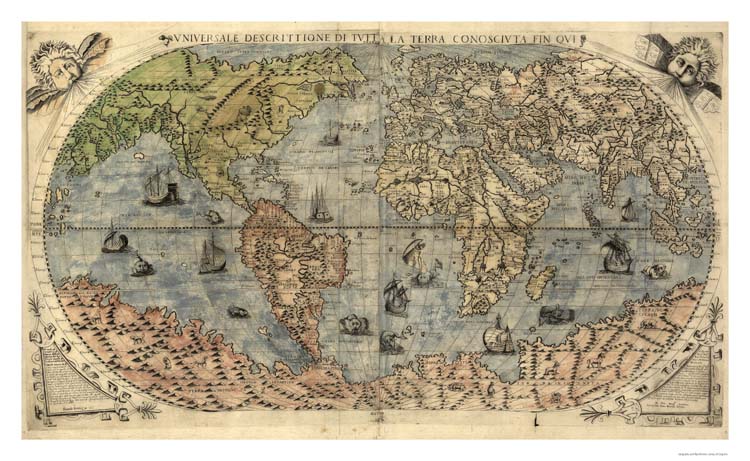


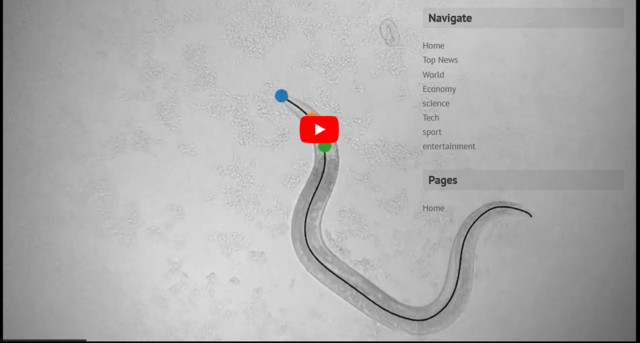

Medical education people aware of both clinical neuroanatomy & learning are usually very interested in your work about the brain & PNS when I provide details
Surprising also to me to see how slowly you ideas are diffusing into scientific circles.
There is a clinical trial currently underway at CAMH our big psychiatry centre in Toronto by psychopharmacology prof on minocycline in bipolar depression…..